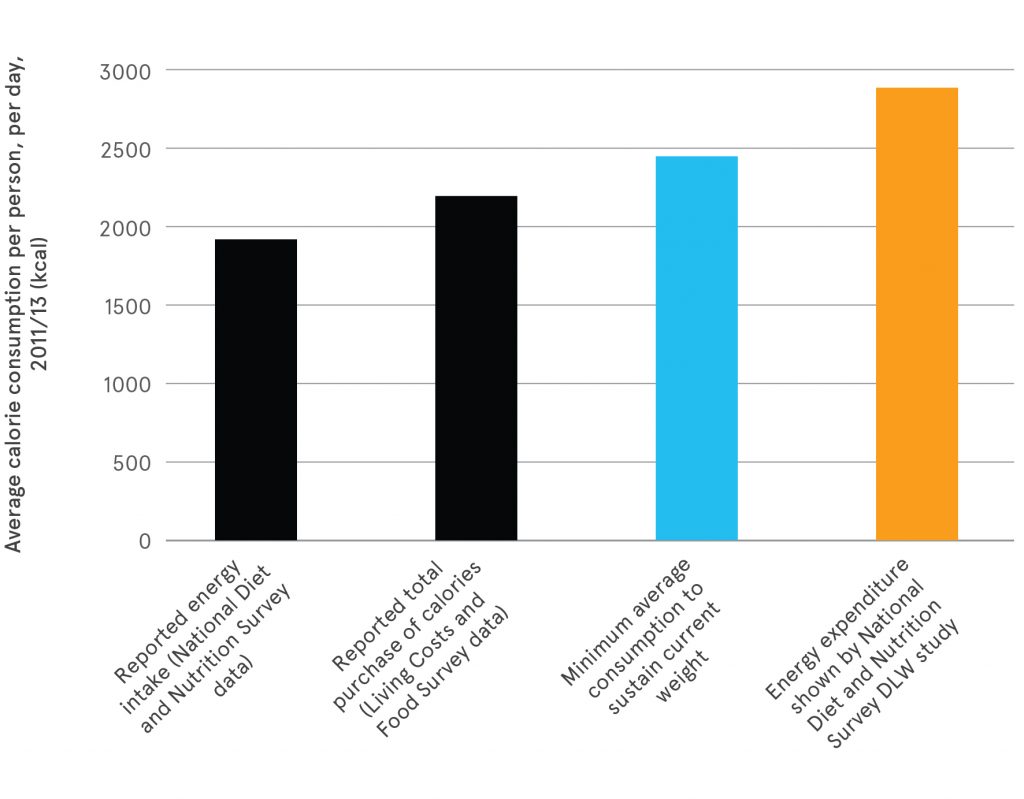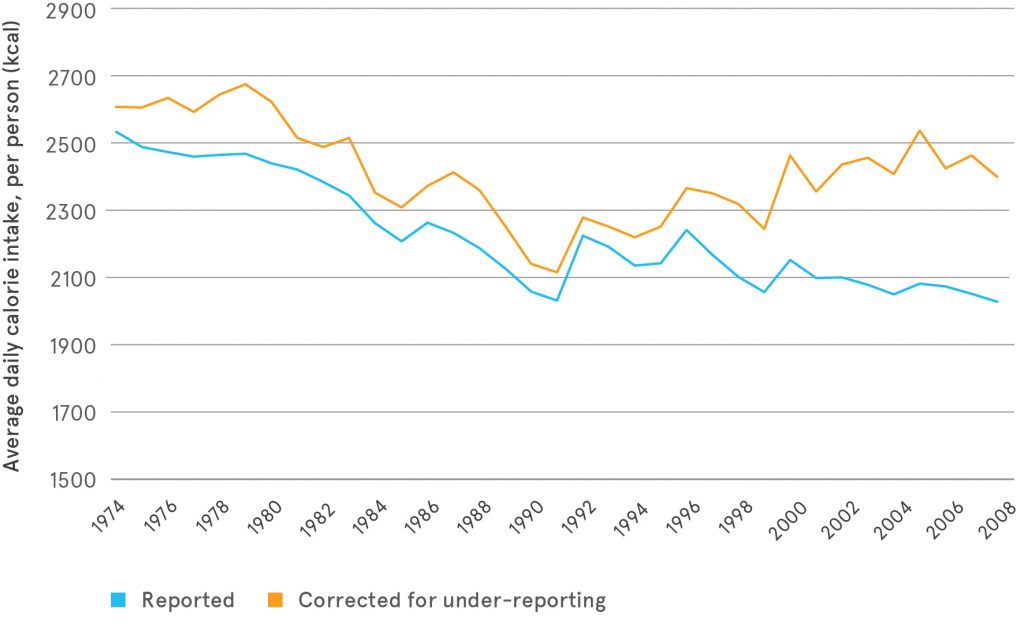Without reliable statistics, we can’t know what progress we are making towards achieving our societal goals.
If we are trying to improve educational outcomes, we need to know how pupils are performing. If we want to cut down congestion, we need to understand how busy the roads are. And if we want to reduce obesity, it’s essential that we have a good grasp of how much we are eating.
And this is where our new report – Counting Calories – comes into play.
Several recent reports have noted that official statistics show a large decline in calorie consumption during the last forty years – the same period that obesity rates have gone up.
This fact will be unexpected to many people, and it has potentially profound implications.
If we really are eating much less, it suggests that policymakers should focus on increasing physical activity (rather than reducing consumption) in order to tackle obesity.
So BIT decided to look more closely at how the official statistics on calorie intake are collected. This resulted in some surprising new findings, all set out in the report.
Our first, most important, finding is that the national surveys used to measure calorie intake are under-estimating how much people are consuming.
We know this because reported calorie consumption is too low to sustain our current weight, even if we were only doing the minimum possible level of exercise. We also have reliable methods that show we are burning much more energy than the statistics suggest (and we must be consuming at least this much energy, or we would be losing weight).
Reported calorie intake versus estimated true calorie intake for adults
Our second finding is that it appears this problem has been getting worse over time. If we correct the figures for this increased under-reporting, it appears that calorie consumption may have been rising, not falling (see graph below).
Calories consumed in the home (Living Costs & Food Survey), corrected and uncorrected for under-reporting
Finally, we address the argument that a fall in physical activity has been the main driver of obesity. The report concludes that this is not a plausible explanation: the falls required to explain the rise in obesity are far too large, once you take into account the fact that heavier people require more energy to sustain their own bodyweight.
A cluster of factors are driving this increased under-reporting. We are now more obese and more likely to say that we are trying to lose weight, both of which drive misreporting; we snack and eat outside the home more, making consumption harder to track; and we are simply less likely to respond to surveys, which makes the data of worse quality.
Importantly, the Government Statistical Service has responded to our report positively and is going to change the way it measures calorie consumption as a result. We look forward to working with them to ensure that the upcoming childhood obesity strategy is informed by the best possible evidence.




